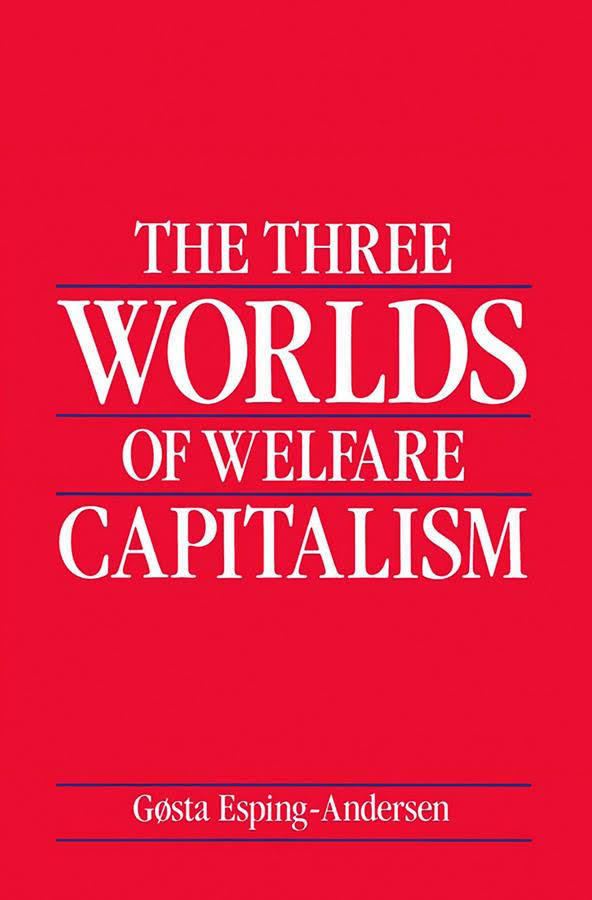Language English Pages 248 ISBN 9780069028573 | Publication date 1990 Originally published 1990 Page count 248 Country United States of America | |
 | ||
Publisher Princeton University Press Similar Gøsta Esping-Andersen books, Welfare state books | ||
The Three Worlds of Welfare Capitalism is a book on political theory written by Danish sociologist Gøsta Esping-Andersen, published in 1990. The work is Esping-Andersen's most influential and highly cited work, outlining three main types of welfare states, in which modern developed capitalist nations cluster. The work occupies seminal status in the comparative analysis of the welfare states of Western Europe and other advanced capitalist economies. The work called into question well-established ways of thinking about differences among welfare states in advanced capitalist democracies. At the time of writing this book, Gsta Esping-Andersen was Professor at the European University Institute, Florence.
Contents
Typology of welfare capitalism
In The Three Worlds of Welfare Capitalism, Esping-Andersen outlines a typology of welfare capitalism in an attempt to classify contemporary Western welfare states as belonging to one of three "worlds of welfare capitalism." The three types are characterised by a specific labour market regime and also by a specific post‐industrial employment trajectory.
The three types are named:
Since its publication the typology has been widely used in academic research and theory, and has generated much debate on the subject of the nature of the welfare state. The desirability of the work's approach has been stated by various comparative welfare state scholars.
In the book Esping-Andersen criticized earlier theoretical models of the welfare state as "inadequate", arguing that their analysis relied too heavily upon the misleading comparison of aggregate welfare state expenditure, and also argued that public expenditure should no longer be a measure of comparison and that we should seek to replace it with other measures. in the place of expenditure, Esping-Andersen built his typology on a rich database of detailed programme characteristics.
East Asia
While using three categories in his typology, the author notes that East Asia may not strictly fit in a single category but may be seen as a hybrid of liberal and conservative models.
